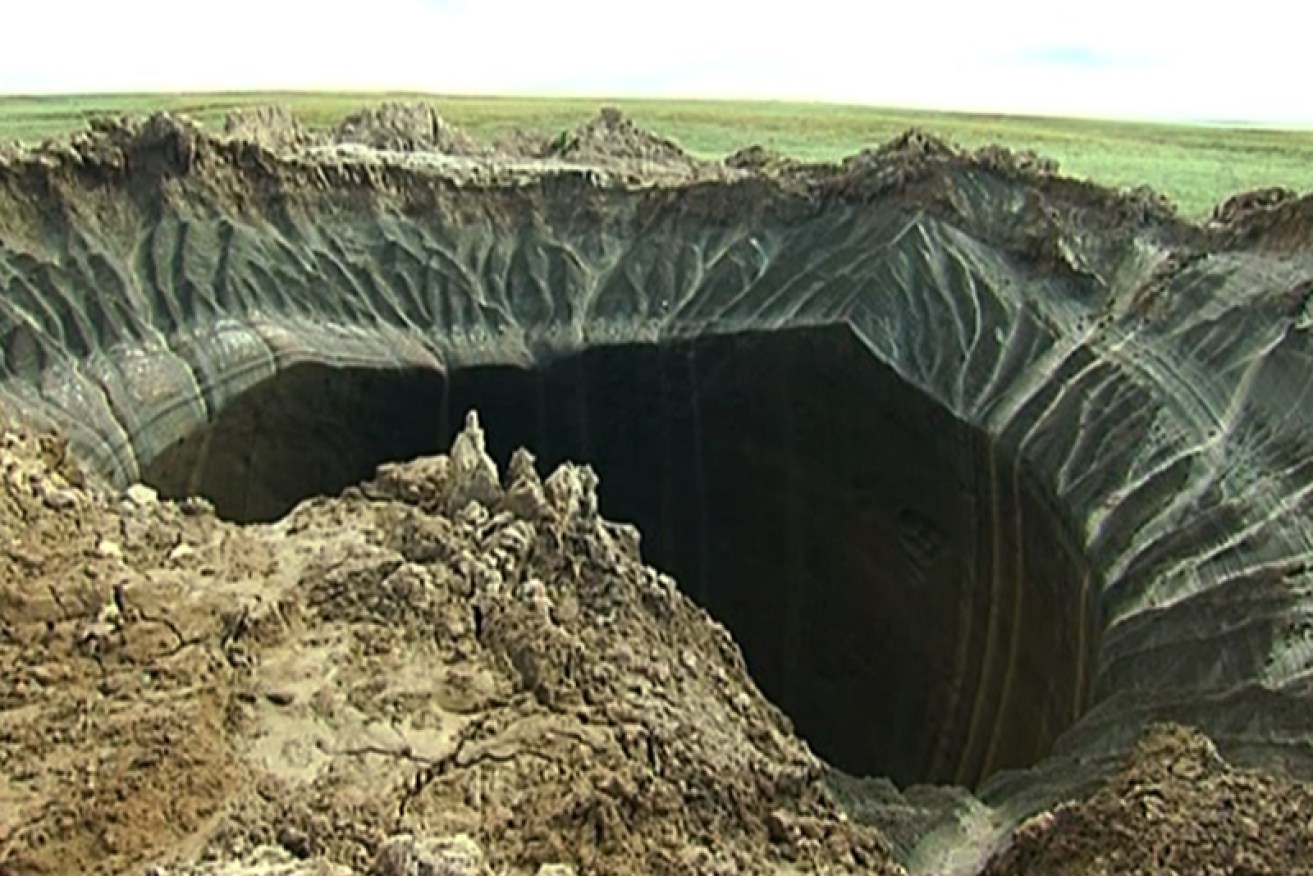Wonders of the world: the Yamal crater

AAP
A vast crater discovered in a remote region of Siberia known to locals as “the end of the world” is causing a sensation in Russia, with a group of scientists being sent to investigate.
The giant hole in the remote, energy-rich Yamalo-Nenetsky region first came to light in a video on YouTube that has since been viewed more than seven million times.
“The crater is enormous in size – you could fly down into it in several Mi-8s (helicopters) without being afraid of hitting anything,” the person who posted the video, named only as Bulka, wrote.
The crater is in the permafrost 30 kilometres from a huge gas field north of the regional capital of Salekhard, about 2000 kilometres northeast of Moscow.
The appearance of the mysterious chasm prompted numerous conspiracy theories and speculation it may have been caused by something otherworldly. Some have even suggested aliens might be behind it.
Initial theories suggesting the crater was caused by a meteorite, however, were dismissed by scientists.
“This does not stand up to any criticism,” the deputy director of the Oil and Gas Research Institute of the Russian Academy of Sciences, Vasily Bogoyavlensky, was quoted as saying by Interfax news agency.
He said the crater was likely to have been caused by the melting of underground ice in the permafrost, freeing gas that then built up high pressure and broke through to the surface.
Regional governor Dmitry Kobylkin has sent a group of scientists into the tundra where the crater is in the Yamal peninsula – which translates as “the end of the world”, Interfax reported.
Marina Leibman, chief researcher at the Earth Cryosphere Institute, which studies permafrost, was part the team sent to scour the area.
She said that the crater could not have been caused by a meteorite because there were no traces of burning around the edge.
“It most likely happened when pressure went up in some cavity containing deposits of marsh gas (methane),” she said.
Andrei Plekhanov, a senior researcher at the state Scientific Centre for the Study of the Arctic, said the crater has a diameter of about 40 metres on the inside and 60 metres on the outside.
“To measure the depth precisely, you need specialists with serious mountaineering equipment,” he added.
The find also prompted speculation that the crater could have been caused by an explosion of shale gas, the regional authorities said in a statement, adding: “This version will also be studied by researchers.”
Scientists have also found a second, smaller crater with a diameter of about 15 metres, Interfax reported, after reindeer herders alerted them.








